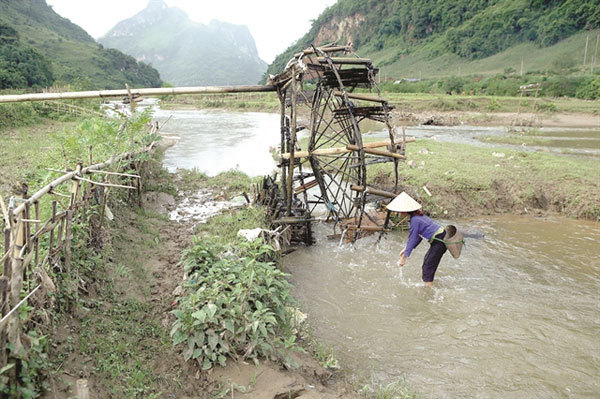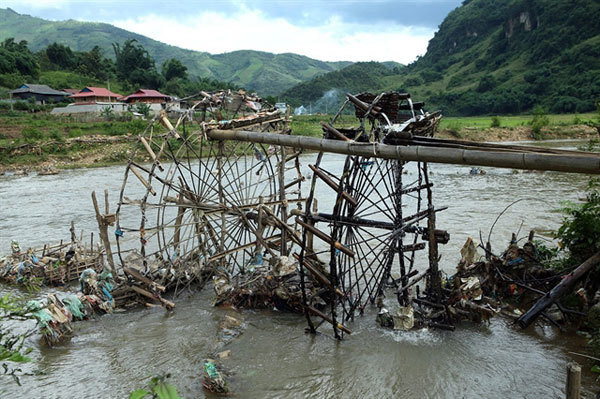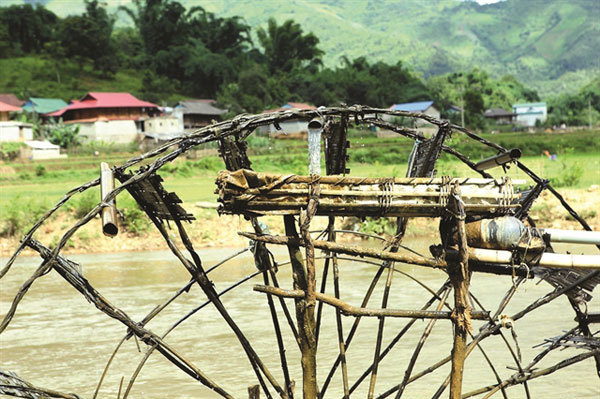 |
|
Giant water wheels in Bo Village, Tam Duong District, Lai Chau Province. — VNA/VNS Photo Nguyen Cong Hai
|
Water wheels are installed by hand by rivers and streams, where the water stream is lower than the field surface. The whole wheel is made of bamboo, tied with some stones to add weight for the wheel to turn around, taking water through the pipes to pour into the higher fields.
The water wheels are the highlights of terrace fields, which attract tourists as well.
The wheels save lots of human effort in watering the fields.
 |
| The main material for building a water wheel is bamboo. — VNA/VNS Photo Phan Tuan Anh |
The Tay and Thai ethnic minority groups cannot remember when the water wheels were first used. They only know the wheels have been with them for generations.
The water wheels are familiar to people of all ages in the Tay and Thai communities.
 |
| A water wheel is a common image for children in mountainous regions and the pride of locals as well. — VNA/VNS Photo Phan Tuan Anh |
People wash their clothes and bathe by the water wheels.
To give stability and steadiness to water wheels, locals use stones got from the streams to tie up in the wheel.
 |
| The bamboo water wheel runs as an automatic water pump for local fields. — VNA/VNS Photo Nguyen Cong Hai |
Thanks to media reports, the water wheels have become known throughout the country as a special feature of the northwestern region.
Many localities have added water wheels to tourist destinations.
 |
| When reaching a certain height, water from pipes will fall into pipes leading to the field. — VNA/VNS Photo Phan Tuan Anh |
The water wheels attract both domestic and foreign tourists to the localities where visitors can experience local delicacies like baked fish from streams, sticky riced raised in mountainous fields and salad made from moss on the rocks. VNS

Lai Chau embraces community tourism
Authorities in the northern province of Lai Chau are promoting policies for community-based tourism to develop the local economy and create jobs.
 Water wheels always appear in the dry season along streams in the northwestern region. The simple bamboo water wheel is associated with the traditional farming methods of ethnic minority groups in mountainous areas.
Water wheels always appear in the dry season along streams in the northwestern region. The simple bamboo water wheel is associated with the traditional farming methods of ethnic minority groups in mountainous areas.